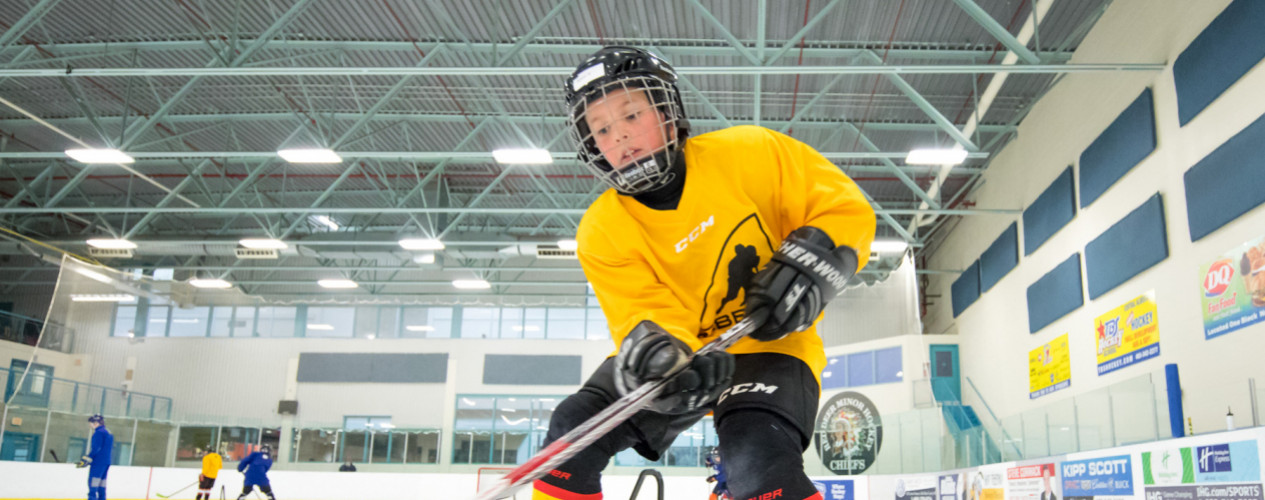U11 Player Pathway
The U11 Player Pathway is supported by the Hockey Canada Long-Term Player Development Model. This framework has been in effect since 2020, and provides the guiding principles for age appropriate and skill specific programming for all players in Hockey Canada’s youth hockey system.
The U11 Player Pathway provides an environment that helps all players at the U11 age level (9 and 10 years old) to realize their full potential. Hockey Canada strongly believes that the needs of the player should be at the forefront of the programming. The U11 Player Pathway delivers numerous benefits to participants and their families. The benefits include:
- creating a positive experience during evaluations with planned pre-evaluation ice sessions;
- avoiding evaluations the first week of school; and
- allowing all U11 players to play actively for 100% of the season.
FAIR AND EQUAL ICE TIME is a key principle of the U11 Player Pathway. Fair and equal ice time is designed to ensure that all players get the same opportunity to contribute to the outcome of games, regardless of skill or ability.
- A coach’s responsibility is to develop all players to contribute.
- Shortening of the bench is not permitted.
- All players should receive as close to equal ice time as possible, including opportunities on special teams (power play and penalty killing).
- All skaters should rotate through all positions to ensure each player can try each position. (LW/C/RW/LD/RD)
- Full-time goaltenders are allowed. If a team has two goalies, they should rotate for equal playing time and the goalie not playing should be allowed to play out as a skater.
Resources
Questions? Contact Hockey Alberta for more information.
U11 Player Pathway phases
SEPTEMBER
Every U11 player must have a minimum of four ice sessions (prep skates) prior to formal tryouts starting. The prep skates can be single year or combined, the recommended focus is:
- Skate 1 - Skills (stations)
- Skate 2 - Offside (stations) | Sample Practice Plan >
- Skate 3 - Small Area Games (line changes / transitions)
- Skate 4 - Controlled Scrimmage (led by coaches)
KEY OUTCOMES:
1. The prep skates are an opportunity for first-year U11 players to become familiar with the rule changes and larger ice surface.
- Playing Rules (off-side, icing, face-offs, penalty procedure, line changes, surface size)
- Offensive and Defensive Concepts
- Spring Ice Option
- Fall Ice Option
2. The prep skates ensure a player’s first experience in the new hockey season is not a formal tryout - this gives all players the opportunity to get back on the ice in a more "player‐friendly" environment.
3. The prep skates help level the playing field; not all players go to hockey schools or prep camps prior to the start of the season.
SEPTEMBER
Tryouts must be a minimum of three formal ice sessions. Recommendation is one skills session, one small‐area games session and one scrimmage game session.
- Players should be selected for teams based on overall skill and not by position.
- Talent identification is about keeping kids around long enough to see what they can really do.
Resources
- Player Selection Resource Guide PDF Version | Microsoft Word Version
 OCTOBER to MID-NOVEMBER
OCTOBER to MID-NOVEMBER
Every team must have a period of development time following team selection and prior to the regular season starting. Skills before tactics, tactics before systems.
- Exhibition games can take place during this phase to finalize team selection.
- League tiering games can take place during this phase for purposes of creating meaningful competition.
- Tournament style tiering weekends should be considered.
PRACTICE VERSUS GAMES
- ONE EFFICIENT PRACTICE gives a player more skill development than 11 games collectively.
- An ideal ratio for 9-12 year-olds is three practices for every one game played.
A GAME BY THE NUMBERS
- A player has the puck on his/her stick for an average of eight seconds per game.
- A player will take an average of one to two shots per game.
- 99 per cent of the feedback a coach gives a player is about when the player has the puck. Ironically, a player only has the puck on his/her stick for 0.2 per cent of the game.
KEY OUTCOMES
- Physical: Warm Up/Cool Down, Performance Enhancers (Hydration, Nutrition, Sleep)
- Mental: Team Identity, Goal Setting
- Life Skills: Team Building, Citizenship
- Technical Skills/ Tactical/ Team: On-Ice, Off-Ice
MID-NOVEMBER to FEBRUARY
The period from the first regular season game to the start of playoffs.
- Travel time for league games must be considered.
- For longer travel times it is recommended to play multiple games or set up tournament style weekends for league play games when necessary.
MARCH
Playoffs must be tournament‐style format versus elimination rounds.
- Can take place over multiple weekends and does not have to be in one location.
- Goal is to have more teams playing meaningful games longer into March.
- 100 per cent of players, playing 100 per cent of games.
APRIL to AUGUST
The period of time from the end of the playoffs to the start of the next preparation phase.
- No player evaluations or formal games are permitted.
- Associations may choose to run development initiatives in April and May, or conditioning initiatives in August. Must be optional for players to attend.
- Multisport activities are recommended during this phase.














 OCTOBER to MID-NOVEMBER
OCTOBER to MID-NOVEMBER
